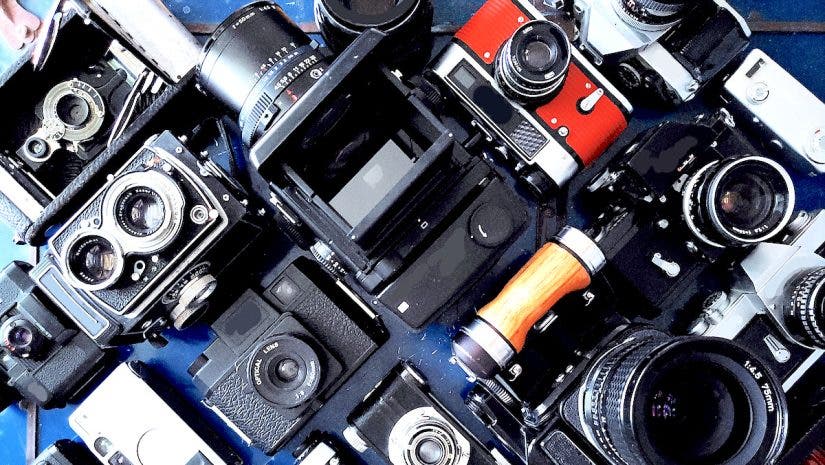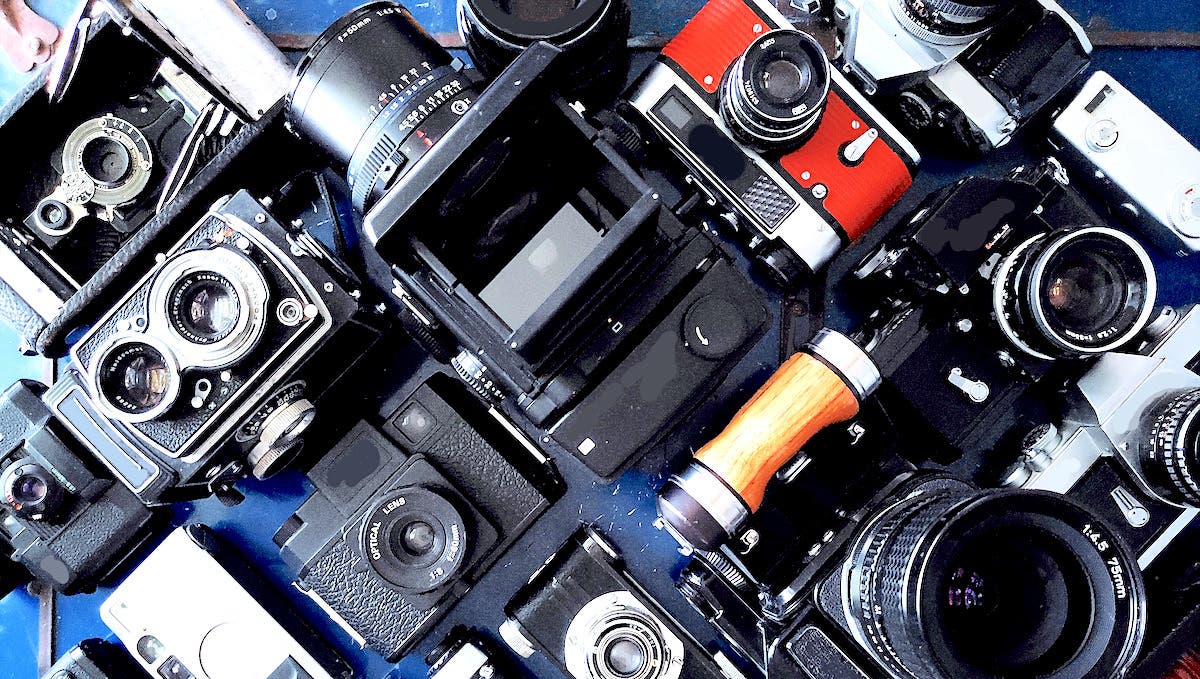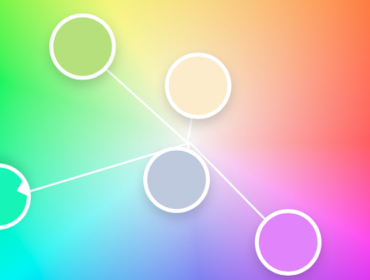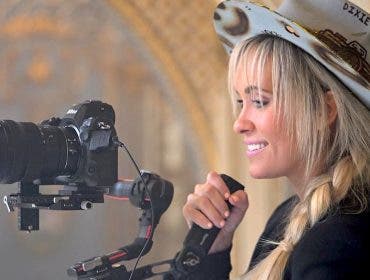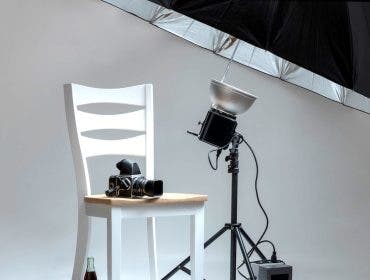We take cameras for granted. After all, every smartphone, tablet, or laptop has (at least) one. They are sometimes affordable, and can deliver high-quality images and videos without too much effort on our side. Nowadays, cameras can be analog or digital, large or tiny, completely automatic or excruciatingly manual, and everything in between. However, that wasn’t always the case. The history of the camera began long before the boom of the digital world, and it has more to do with the philosophy of photography than with its technicalities.
What is a Camera?
A camera is a device capable of capturing still or moving images by using light. Everything that surrounds us looks a certain way because of light. Without it, we wouldn’t have colors, highlights, shadows, or contrast. A camera takes advantage of that by combining optics and mechanics, chemistry and electronics, in such a way that light gets imprinted on a light-sensitive material.
In the case of analog cameras, the medium is the photographic film. In the case of digital cameras, the medium is an electronic sensor. Both the film and sensor react differently to different amounts of light, therefore recreating the scenery in front of the camera.
Timeline of the Camera
The first cameras were nothing like the modern ones. But each proved a principle and took photography one step closer to what it is today: an artful manner of recording the world. Every stage on the camera’s timeline is a valuable lesson about curiosity, determination, and unique ways of seeing the world.
Camera Obscura
Camera obscura (translated as ‘the dark room’) represents the first step in seeing the world as a series of images. It is a dark room or box having a small hole (aka pinhole camera) or lens on one side that lets the light get through and projects an image on the opposite wall. It was used around the middle of the 16th century as a way of indirectly looking at eclipses or studying astronomical phenomena, as an aid in drawing and painting, and for entertainment. Camera obscura represents one of the first attempts at understanding and making use of light’s reflection and refraction properties.
However, the image projected by a camera obscura was ephemeral. It wasn’t recorded in any way other than the operator drawing on the wall the contours of the projection. Nevertheless, it brought many benefits to painting, architecture, map drawing, and even philosophy. Camera obscura is still used today for teaching purposes.
Heliography
Camera obscura wasn’t really a camera until 1816 when Joseph Nicéphore Niépce used it to create the first-ever photograph. What Niépce did was find a way to record the image projected by the camera obscura. He used a light-sensitive material called “Bitumen of Judea” or “Asphalt of Syria,” a semi-solid oil, and mixed it with pewter. The result was a permanent image that would survive after the camera obscura was closed. He named his method heliography, which translates as “sun drawing.”
We don’t have the first photograph he created, but we have one from 1826, taken at Le Gras, France. Niépce’s process used a multi-day exposure time to capture the image. Therefore, a landscape would be his only possible subject. At this point, people were more interested in capturing images than choosing the subject matter — but that will soon change.

Niépce experimented with other materials as well, such as lavender oil distillate, and it seems he was convinced silver was a good choice. He became a partner with Louis Daguerre in 1829 and passed the torch for the next stage in the history of the camera.
Daguerreotype
Louis Daguerre continued, improved, and finally changed Niépce’s process completely. In 1839, he announced a new photographic process named after him: daguerreotype. The daguerreotype requires a silver-plated copper with a mirror finish treated with substances that make its surface sensitive to light. The plate is exposed to light in a black box for a given period of time, which can be as short as a few seconds. Then, it is fumed with mercury vapor, chemically treated to become insensitive to light, rinsed, dried, and sealed in a protective glass enclosure.
Unlike heliography, the daguerreotype produces a much better image quality, requires less exposure time, and is portable. Thus, Louis Daguerre wasn’t limited to capturing landscapes. He could photograph people, still life, and street views. This made his process popular in a very short amount of time. The French government bought the rights and presented the daguerreotype as a gift to the world.
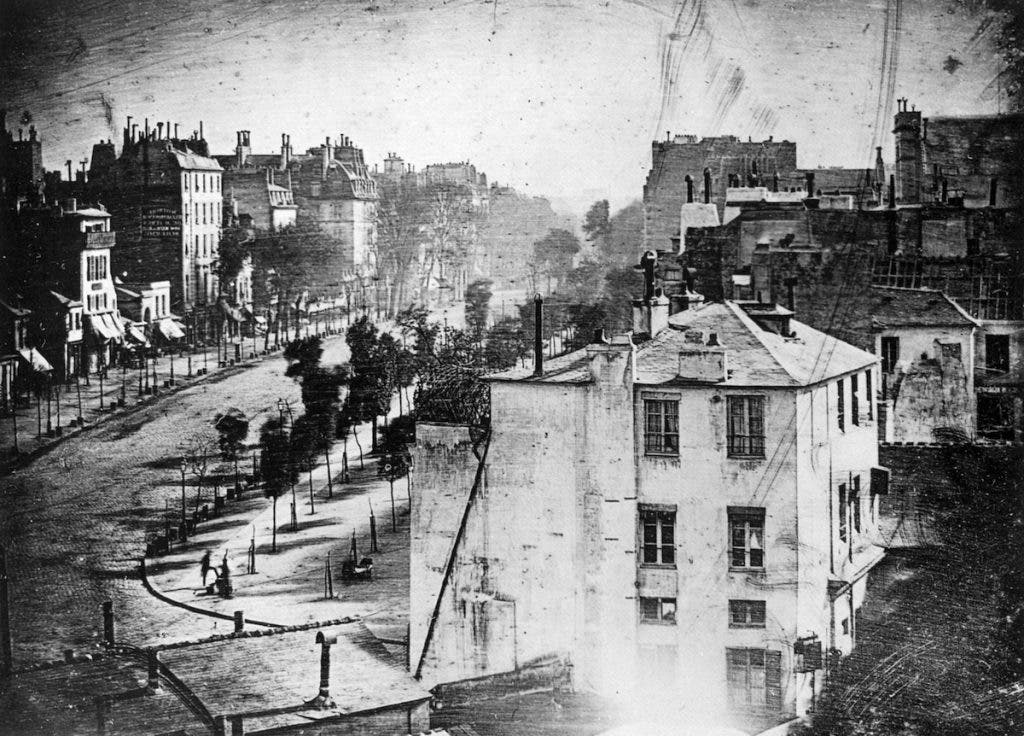
Although much appreciated and popular, the daguerreotype wasn’t for the masses— just a few daguerreotypists could afford the camera and necessary materials. Furthermore, there was no way to get multiple photos from a negative.
The First Photographic Camera
Here lies some controversy. Niépce’s heliography process was the first-ever camera, but it was mostly an experimental one. Daguerre’s daguerreotype was much better, more practical, and more popular. However, it still wasn’t for everyone. But in 1839, soon after the launch of the daguerreotype, Alphonse Giroux produced the first camera to use plates from the shelf. And many argue that this is the first photographic camera.
Giroux created a daguerreotype camera that used standardized plates one could buy in different sizes. It had an exposure time of 5 to 30 minutes and cost around $7,000 in today’s money. It wasn’t cheap, but it was accessible.
Also in 1839, Henry Fox Talbot presented something called “a film.” Instead of using daguerreotype plates, he used writing paper soaked in table salt and covered in silver nitrate. The photographs were blurrier than the ones made by a daguerreotype and the method, called calotype, didn’t catch the public’s attention. Nevertheless, it was the first mention of a photographic film and the first step toward using paper instead of plates.
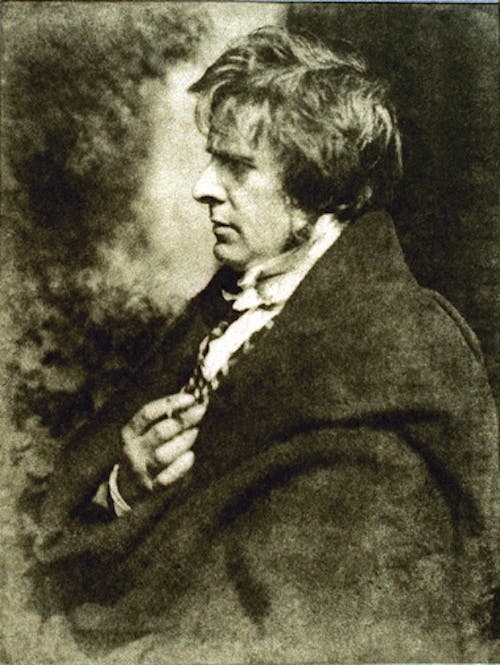
So, which is the first photographic camera? One that’s able to record an image, one that’s portable and able to capture any static subject, one that’s accessible to more than a handful of people, or one that uses a film? Each of them is the first in some regard and holds importance in the history of the camera.
Mirror Camera
Besides the minute-long exposure time and expensive gear, the daguerreotype had another issue: the image faded fast. You couldn’t hope the portrait of a family member will outlast them. Therefore, in 1840, American Alexander Simon Wolcott presented a daguerreotype camera that didn’t have a lens. Instead, it had a concave reflecting mirror and was, for that reason, called a mirror camera.
Wolcott used the mirror to reflect light onto a plate sensitive to light and produced a positive image. Later on, he and his partner Johnson improved the photo-sensitive plate by using a mix of bromide and chloride that accelerated the process and developed a lighting method that used outdoor mirrors to reflect light inside the studio.
The use of the mirror reduced the sitting time for a portrait from 30 minutes to 5 minutes and increased the lifetime of the photograph. The natural next step for Wolcott and Johnson was to open a portrait studio in New York City, a world’s first, followed by a branch in Washington D.C. and one in England. The mirror camera was the beginning of commercial photography.
Instantaneous Exposures
At the end of the 19th century, photography was still in its early stages. The photographic process was difficult and involved many chemicals. Furthermore, developing had to be done soon after taking the photo because the chemicals would dry and ruin the exposure. One couldn’t take a photograph without proper training.
But in 1871, Richard Leach Maddox found a way to make the developing process faster and healthier. Affected by the chemical vapor used in the developing process, Maddox started experimenting with a gelatin emulsion. It was a complete success. First of all, gelatin dry plates didn’t require preparations. Anyone could get them from the store and use them immediately. Then, they didn’t have to be developed immediately, could be made in smaller sizes, and supported faster exposure times. By 1878, Charles Harper Bennett had already created the first gelatin dry plates for sale and decreased the exposure time to 1/25 second.
Roll Film Cameras
From the gelatin dry plates to celluloid film was only one step. And it was George Eastman’s contribution to photography. In 1888, Eastman manufactured and started selling a camera named Kodak. It used a roll film and allowed for 100 exposures. Then, the photographer would send the box camera to the Kodak factory for developing. A Kodak camera cost $25. It was affordable, much easier to use than previous cameras, and accessible to anyone. Kodak’s slogan was “You press the button, we do the rest.”
In 1900, Kodak released a new model, the Kodak Brownie, which was even simpler and less expensive than the first model. Everyone afforded to record their memories, and not just family portraits. People started photographing events, vacations, places they were visiting, and anything that captured their interest. The developing process became less expensive. In a few years, photography was accessible to the masses as a leisure activity. Eastman became one of the richest men in the U.S. Kodak remained at the top of the photography industry for almost a century and is still around today.
35mm Film Camera
We owe the 35mm film to a German inventor and photographer called Oskar Barnack — and to Leica. In 1913, the inventor was experimenting with the 35mm motion picture film, aiming to make it useful for photography as well. The 35mm film is a 35x24mm film roll in a protective cassette that allows for a fixed number of exposures. Initially, it had 36 exposures.
Instead of sending the entire camera to be developed, now you would be sending only the film. Furthermore, any camera manufacturer could launch a camera that used 35mm film. And so they did. Today’s standard for analog photography was adopted by Kodak in 1934. Many others followed.
Leica is a German company founded in 1869. They were doing cameras, optical lenses, binoculars, and rifle scopes, but the commercially available 35mm film camera made them famous. That’s because Leica cameras had quite a few aces up their sleeves. First, Leica cameras had interchangeable lenses, and the company provided three options: 50mm, 35mm, and 135mm. Then, they had a viewfinder, a rangefinder (focus aid mechanism), and a range of shutter speeds from 1 second to 1/1000 of a second. Unlike the cameras before them, Leica cameras provided options, artistic freedom, and artistry.
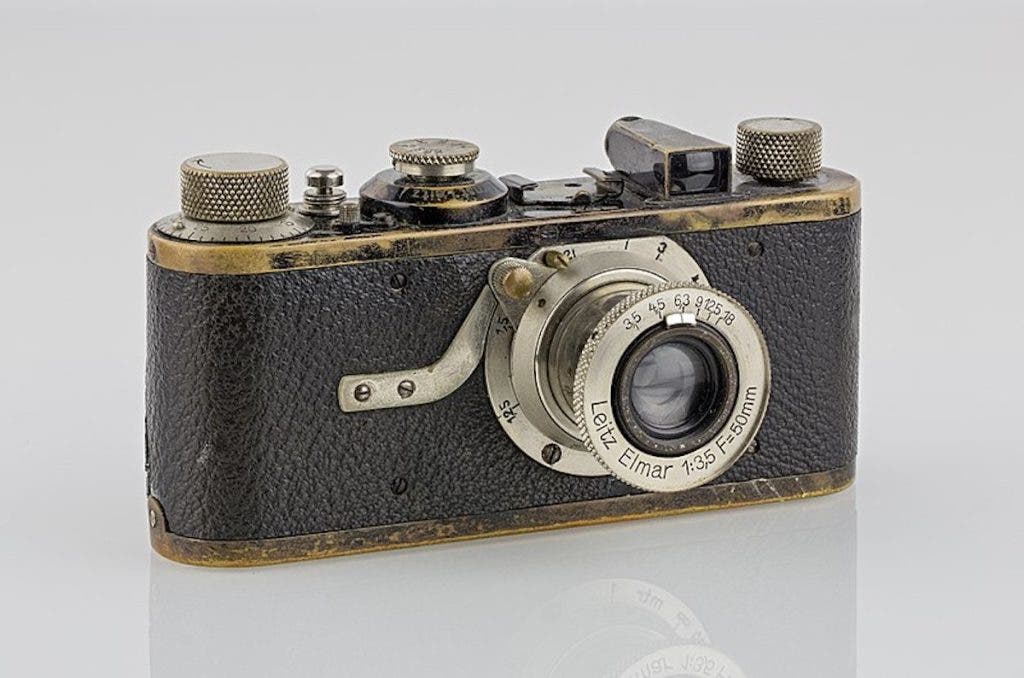
Twin-Reflex Camera (TLR)
Twin-reflex cameras have two identical lenses (same focal length) vertically arranged. The one at the bottom will take the photo, while the one at the top will be the viewing lens. The TLRs aimed to provide the same image through the viewfinder as the recorded photo. Although the technology of SLR cameras (single-lens reflex) has been available since 1861 thanks to Thomas Sutton, building SLR cameras was too complicated and expensive. So the first camera models, such as Kodak and Leica, were TLR cameras.
TLR cameras were popular for about 40 years, between 1920 and 1960. They were left behind by modern cameras. At the time, they provided interchangeable lenses, a leaf-type shutter that made possible variable shutter speeds and flash sync, reliable and silent mechanisms, and a funny boxy design.
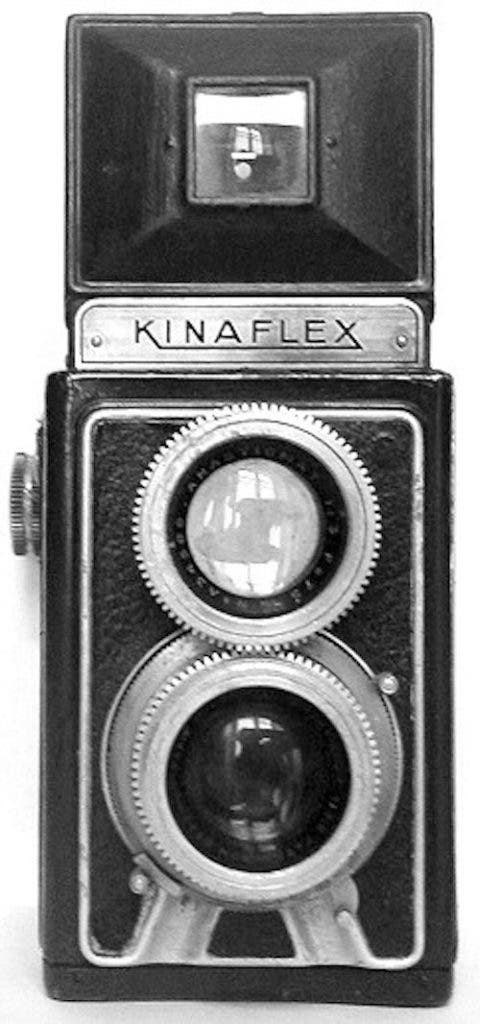
SLR cameras became popular after the Second World War because of technological advances. And they have never left the scene since.
Digital SLR Camera (DSLR)
A digital SLR camera is an SLR camera that uses an electronic sensor instead of photographic film. Early attempts to build a DSLR include Kodak’s engineer Steven Sasson (1975, a 4kg camera with a 0.01MP resolution, and a 23 seconds exposure time), the Sony Mavica (1981, with a color striped 2/3” format CCD sensor with 280K pixels and analog signal processing and recording), the Canon RC-701 (1986, with a 2/3” format color CCD sensor with 380K pixels), and the Nikon E series (1995).
However, the first full-digital professional DSLR camera was Nikon D1, launched in 1999. The first consumer-level DSLR, FinePix S1 Pro, was launched a year later by Fujifilm. The 21st century brought an explosion of innovation and technological advances that made DSLR cameras more performing, reliable, versatile, and affordable. They feature optical viewfinders, manual and automatic focus mechanisms, interchangeable lenses, ultra-fast and ultra-slow shutter speeds, astonishing photo resolutions, LCD screens, and more.
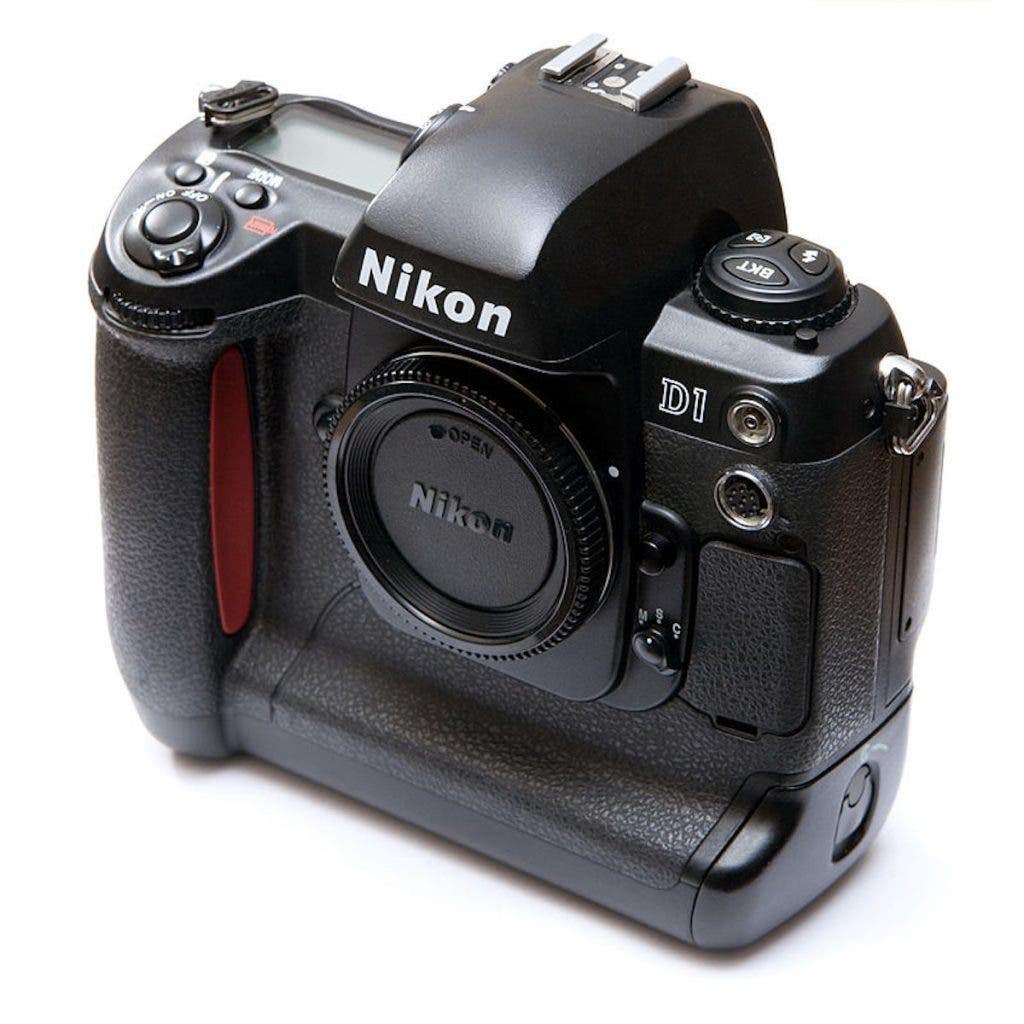
Mirrorless Camera
A mirrorless camera doesn’t have a reflex mirror that flips between serving the viewfinder and projecting the image onto the sensor. As a result, mirrorless cameras don’t have an optical viewfinder but an electronic one. Nevertheless, they are smaller, more compact, lighter, and more silent. The professional photographer always on the move needed lightweight gear that offers the same performance as a DSLR.
Mirrorless cameras entered the market around 2010 and had to prove themselves before being accepted into the world of professional photography. However, nowadays, they offer similar sensor sizes, lens variety, image quality, and maneuverability as DSLR cameras. In addition, the lack of a reflex mirror allows them to provide a focus-peaking display, zebra patterning, face or eye tracking, improved visibility in low light conditions, and a live depth of field preview. Deciding between a mirrorless camera and a DSLR is more a matter of preference than technical requirements.
Most Influential Cameras
Many cameras had a remarkable impact on the history of photography. Not just because they brought new features or stunning technological innovation, but because they changed how people relate to photography and emphasized the many roles photography has in our lives (e.g., art, documentary, social, cultural, etc.). Here are the most influential of them:
1. Niépce’s Heliography Camera
This has to get first place because it created the first-ever photograph and made the rest of photography history possible. Without it, we would have used camera obscura to look at images but never recorded them. It was a simple wood box with a lens on one side and a light-sensitive material on the other side and took days to create a photograph, but it was nonetheless the birth of photography.
2. Wolcott’s Camera
This takes second place because it started the photography industry. It proved that photography isn’t just for experiments, but for anyone who wants to record a memory. The success of his portrait studios showed the incredible force of photography. Furthermore, he experimented with chemicals that made the process faster and more pleasant, and built the basis of photography lighting. One can say that Wolcott’s camera represents the first photo session.
3. Charles Harper Bennett’s Camera
In third place, it is Charles Harper Bennett’s camera with gelatin dry plates. Although Richard Leach Maddox receives the credits for inventing the gelatin silver process, it was Charles Harper Bennett who made the gelatin dry plates commercially available and put the basis of instantaneous photography. His camera had an exposure time of 1/25 second and could photograph moving subjects. It may be considered the first “action camera.”
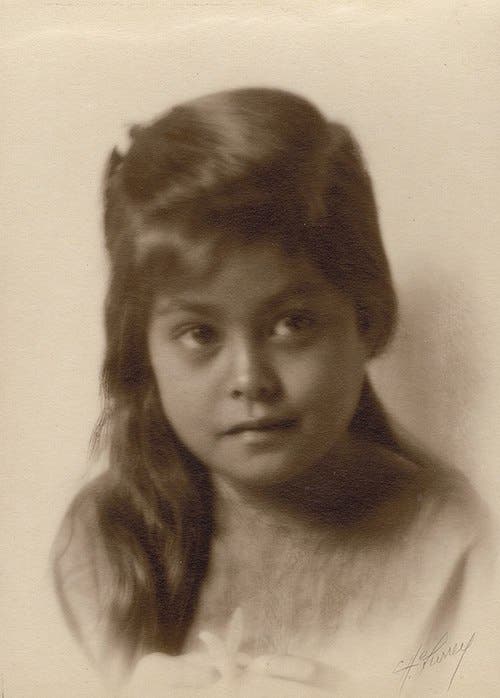
4. Kodak Brownie
Kodak Brownie, released in 1900, has its place in history for sure. It was the first camera designed for the masses, so affordable and easy to use that everyone could use it. Kodak Brownie was the camera that took photography out of the professional photographer’s studio and into the streets. Its massive popularity proved the mesmerizing effect of photography: once you take a photograph, you can’t stop. Kodak Brownie was part of the social and cultural changes happening at the beginning of the 20th century and recorded them for posterity.
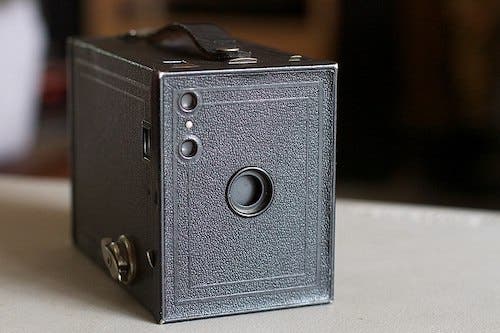
5. Leica I and II (1925, respectively 1932)
These cameras established the 35mm film as a standard. They opened the door to any manufacturer willing to build a camera and eliminated the industry monopole. Leica II is the first camera with interchangeable lenses, a separate viewfinder, and a built-in rangefinder. But Leica I and II had been more than technological innovation. They were the first cameras to transform ordinary people into professional photographers. These cameras started landscape photography, photojournalism, and war photography. They were present in the Spanish Civil War (1936-1939) and the Second World War (1939 – 1945).
6. Rectaflex Series 1000 (1948) and Zeiss Contax S (1949)
These cameras share this place because they are the first SLR cameras on the market. Both had eye-level pentaprism. This means they allowed the photographer to see a correctly oriented image through the viewfinder. In addition, Zeiss put a Fresnel lens between the pentaprism and the ground-glass screen to brighten the image in the viewfinder. This technology and design are still used in modern SLR cameras because it’s the easiest and most comfortable way to frame a photo.
7. Polaroid Land Model 95
This is the world’s first instant camera. It was released in 1948 and was an instant success. The camera didn’t require developing and printing in a dedicated studio. It would print the photos on the spot. Polaroid’s instant cameras allowed the photographer to see the result immediately and take another shot if needed. In the 1960s, Polaroid advertised the cameras among professional photographers, such as Ansel Adams, Andy Warhol, and Helmut Newton.
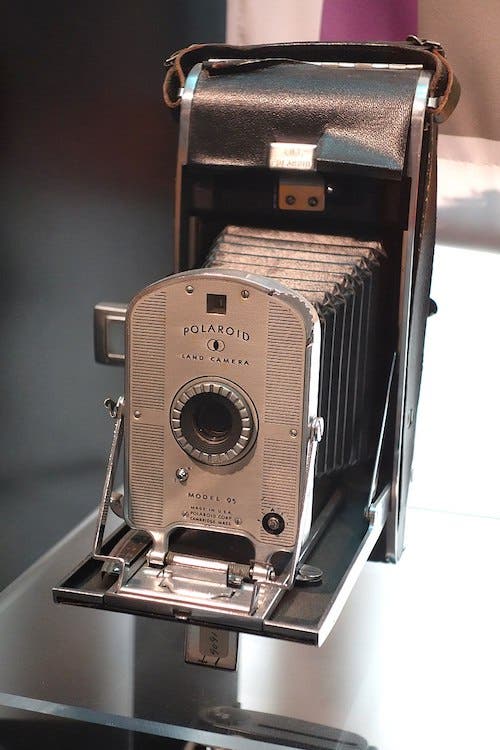
8. Nikon D1
This is the world’s first purpose-built professional DSLR. Released in 1999, it featured a 2.7MP sensor, 4.5fps continuous shooting, interchangeable lenses, an autofocus system, multiple metering modes, a built-in flash, and a shutter speed range between 30 seconds and 1/16,000 of a second. It had an optical viewfinder, an LCD screen, and a Nikon EN-4 Ni-MH battery pack. Nikon D1 supported Nikon F-mount lenses and weighed 1.1kg (without the lens). It was an exquisite photography gear that made everything possible (e.g., long exposures, action shots, nighttime photography, etc.).
9. Epson R-D1
This is not an iconic camera now, but it was back in 2004 when it was the first mirrorless camera on the market. It featured a 6.1MP APS-C sensor, manual focus, a shutter speed range between one second and 1/2000 of a second, a dynamic range between ISO 200 and 1,600, and an LCD screen. The R-D1 supported Leica M-mount lenses. It wasn’t a match for the existing DSLRs, but it weighed only 560g. It was a promise of what mirrorless cameras can do, and it wasn’t long until the R-D1 wasn’t the only one of its kind.
10. Leica M3
This is not the first camera in any department except in people’s hearts. Released in 1954, it was the finest 35mm camera — discrete, reliable, and silent. It is an iconic camera through design and concept, so much so that Leica’s M10 camera tries to resemble its qualities.
But it’s not only about the build quality and excellent optical properties of Leica cameras. It’s also about their presence. Many famous photographers, from Henri Cartier Bresson to Annie Leibovitz were and are unable to give up their Leica cameras. These cameras were there to record wars, Gandhi’s funeral, and moments in the lives of Che Guevara, Richard Nixon, Queen Elizabeth II, and of so many others. They are the heart and soul of photojournalism and provide the perfect balance between technical abilities and artistic freedom.
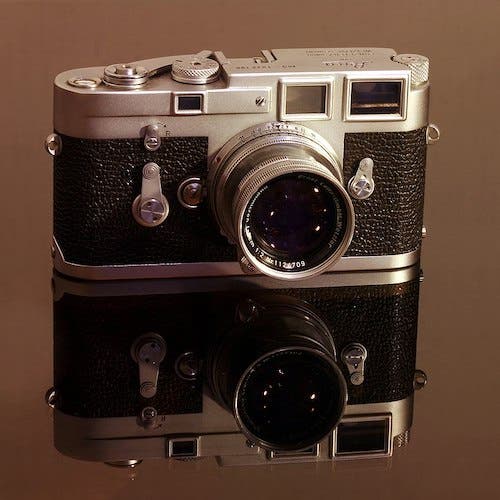
Camera History: Frequently Asked Questions
The first device able to reproduce and capture an image was invented in 1816 by Joseph Nicéphore Niépce and was called the heliograph. In 1839, Louis Daguerre created the daguerreotype, which was much closer to the photographic camera concept we know today.
The oldest photograph preserved today is a landscape taken by Joseph Nicéphore Niépce at Le Gras, France, in 1826. Theoretically, it’s not the first-ever photograph because Niépce had been experimenting with heliography since 1816. But previous ones didn’t get to enter history.
Kodak is considered the first camera brand. The company created by George Eastman in 1888 produced the first camera for the masses. Kodak used a roll of paper, later celluloid, able to hold 100 pictures. After using all the exposures, the entire camera was sent to Kodak laboratories for developing.
Color photography relied more on the photographic process than on the camera. Auguste and Louis Lumière developed in 1907 the Autochrome process, which produced monochrome brownish photos. However, it was the launch of Kodak’s Kodachrome film in 1935 that opened the door to color photography. Kodachrome was closely followed by Agfacolor (1936) by Agfa and Kodacolor (1942) by Kodak.
Conclusion
The history of the camera shows how photography followed closely advances in technology and the social and cultural environment. It started as a challenge and ended as something we couldn’t imagine life without. Photography is part of how we use technology, understand the news, look at art, and interact with each other.
